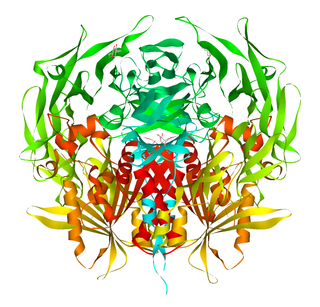| PI16 | |||||||||||||||||||||||||||||||||||||||||||||||||||
|---|---|---|---|---|---|---|---|---|---|---|---|---|---|---|---|---|---|---|---|---|---|---|---|---|---|---|---|---|---|---|---|---|---|---|---|---|---|---|---|---|---|---|---|---|---|---|---|---|---|---|---|
| Identifiers | |||||||||||||||||||||||||||||||||||||||||||||||||||
| Aliases | PI16 , CRISP9, MSMBBP, PSPBP, CD364, peptidase inhibitor 16 | ||||||||||||||||||||||||||||||||||||||||||||||||||
| External IDs | MGI: 1921366 HomoloGene: 134317 GeneCards: PI16 | ||||||||||||||||||||||||||||||||||||||||||||||||||
| |||||||||||||||||||||||||||||||||||||||||||||||||||
| |||||||||||||||||||||||||||||||||||||||||||||||||||
| |||||||||||||||||||||||||||||||||||||||||||||||||||
| |||||||||||||||||||||||||||||||||||||||||||||||||||
| |||||||||||||||||||||||||||||||||||||||||||||||||||
| Wikidata | |||||||||||||||||||||||||||||||||||||||||||||||||||
| |||||||||||||||||||||||||||||||||||||||||||||||||||
Peptidase inhibitor 16 is a protein that in humans is encoded by the PI16 gene. [5]
| PI16 | |||||||||||||||||||||||||||||||||||||||||||||||||||
|---|---|---|---|---|---|---|---|---|---|---|---|---|---|---|---|---|---|---|---|---|---|---|---|---|---|---|---|---|---|---|---|---|---|---|---|---|---|---|---|---|---|---|---|---|---|---|---|---|---|---|---|
| Identifiers | |||||||||||||||||||||||||||||||||||||||||||||||||||
| Aliases | PI16 , CRISP9, MSMBBP, PSPBP, CD364, peptidase inhibitor 16 | ||||||||||||||||||||||||||||||||||||||||||||||||||
| External IDs | MGI: 1921366 HomoloGene: 134317 GeneCards: PI16 | ||||||||||||||||||||||||||||||||||||||||||||||||||
| |||||||||||||||||||||||||||||||||||||||||||||||||||
| |||||||||||||||||||||||||||||||||||||||||||||||||||
| |||||||||||||||||||||||||||||||||||||||||||||||||||
| |||||||||||||||||||||||||||||||||||||||||||||||||||
| |||||||||||||||||||||||||||||||||||||||||||||||||||
| Wikidata | |||||||||||||||||||||||||||||||||||||||||||||||||||
| |||||||||||||||||||||||||||||||||||||||||||||||||||
Peptidase inhibitor 16 is a protein that in humans is encoded by the PI16 gene. [5]

Dipeptidyl peptidase-4 (DPP4), also known as adenosine deaminase complexing protein 2 or CD26 is a protein that, in humans, is encoded by the DPP4 gene. DPP4 is related to FAP, DPP8, and DPP9. The enzyme was discovered in 1966 by Hopsu-Havu and Glenner, and as a result of various studies on chemism, was called dipeptidyl peptidase IV [DP IV].

Kallikrein-1 is a protein that in humans is encoded by the KLK1 gene. KLK1 is a member of the peptidase S1 family.

G protein-coupled receptor family C group 6 member A (GPRC6A) is a protein that in humans is encoded by the GPRC6A gene. This protein functions as a receptor of L-α-amino acids, cations, osteocalcin, and steroids. It is a membrane androgen receptor.

Acyl-CoA-binding protein in humans belongs to the family of Acyl-CoA-binding proteins.

Antileukoproteinase, also known as secretory leukocyte protease inhibitor (SLPI), is an enzyme that in humans is encoded by the SLPI gene. SLPI is a highly cationic single-chain protein with eight intramolecular disulfide bonds. It is found in large quantities in bronchial, cervical, and nasal mucosa, saliva, and seminal fluids. SLPI inhibits human leukocyte elastase, human cathepsin G, human trypsin, neutrophil elastase, and mast cell chymase. X-ray crystallography has shown that SLPI has two homologous domains of 53 and 54 amino acids, one of which exhibits anti-protease activity. The other domain is not known to have any function.

Pancreatic secretory trypsin inhibitor (PSTI) also known as serine protease inhibitor Kazal-type 1 (SPINK1) or tumor-associated trypsin inhibitor (TATI) is a protein that in humans is encoded by the SPINK1 gene.

Tripeptidyl-peptidase 1, also known as Lysosomal pepstatin-insensitive protease, is an enzyme that in humans is encoded by the TPP1 gene. TPP1 should not be confused with the TPP1 shelterin protein which protects telomeres and is encoded by the ACD gene. Mutations in the TPP1 gene leads to late infantile neuronal ceroid lipofuscinosis.

Pancreatic Stone Protein (PSP), also known as Lithostathine-1-alphaislet cells regeneration factor (ICRF) or islet of Langerhans regenerating protein (REG) is a protein that in humans is encoded by the REG1A gene as a single polypeptide of 144 amino acids further cleaved by trypsin to produced a 133 amino acid protein that is O-linked glycosylated on threonine 27. This protein is a type I subclass member of the Regenerating protein family. The Reg protein family is a multi protein family grouped into four subclasses, types I, II, III and IV based on the primary structures of the proteins. Reg family members REG1B, REGL, PAP and this gene are tandemly clustered on chromosome 2p12 and may have arisen from the same ancestral gene by gene duplication. The PSP is mostly produced in Human by the acinar cells of the pancreas and is secreted in the duodenum by the same pathway that pancreatic exocrine enzymes. It has C-terminal C-type lectin domain whose binding partner is currently unknown.

Ribonuclease pancreatic is an enzyme that in humans is encoded by the RNASE1 gene.

Beta-microseminoprotein is a protein that in humans is encoded by the MSMB gene. For historical reasons, the scientific literature may also refer to this protein as Prostate secretory protein 94 (PSP94), microseminoprotein (MSP), microseminoprotein-beta (MSMB), beta-inhibitin, prostatic inhibin peptide (PIP), and inhibitin like material (ILM).

Cathepsin H is a protein that in humans is encoded by the CTSH gene.

Annexin A7 is a protein that in humans is encoded by the ANXA7 gene.

Cysteine and glycine-rich protein 2 is a protein that in humans is encoded by the CSRP2 gene.

A disintegrin and metalloproteinase with thrombospondin motifs 9 is an enzyme that in humans is encoded by the ADAMTS9 gene.

Protein phosphatase 1 regulatory subunit 3C also known as PTG is an enzyme that in humans is encoded by the PPP1R3C gene.

Retinoic acid receptor responder protein 1 is a protein that in humans is encoded by the RARRES1 gene.

Acidic leucine-rich nuclear phosphoprotein 32 family member D is a protein that in humans is encoded by the ANP32D gene.

Phospholipid scramblase 4, also known as Ca2+-dependent phospholipid scramblase 4, is a protein that is encoded in humans by the PLSCR4 gene.

Carboxypeptidase A6 (CPA6) is a metallocarboxypeptidase enzyme that in humans is encoded by the CPA6 gene. It is highly expressed in the adult mouse olfactory bulb and is broadly expressed in the embryonic brain and other tissues.

PBX/Knotted 1 Homeobox 2 (PKNOX2) protein belongs to the three amino acid loop extension (TALE) class of homeodomain proteins, and is encoded by PKNOX2 gene in humans. The protein regulates the transcription of other genes and affects anatomical development.